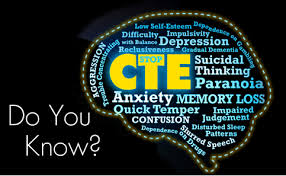- Home
- Medical news & Guidelines
- Anesthesiology
- Cardiology and CTVS
- Critical Care
- Dentistry
- Dermatology
- Diabetes and Endocrinology
- ENT
- Gastroenterology
- Medicine
- Nephrology
- Neurology
- Obstretics-Gynaecology
- Oncology
- Ophthalmology
- Orthopaedics
- Pediatrics-Neonatology
- Psychiatry
- Pulmonology
- Radiology
- Surgery
- Urology
- Laboratory Medicine
- Diet
- Nursing
- Paramedical
- Physiotherapy
- Health news
- Fact Check
- Bone Health Fact Check
- Brain Health Fact Check
- Cancer Related Fact Check
- Child Care Fact Check
- Dental and oral health fact check
- Diabetes and metabolic health fact check
- Diet and Nutrition Fact Check
- Eye and ENT Care Fact Check
- Fitness fact check
- Gut health fact check
- Heart health fact check
- Kidney health fact check
- Medical education fact check
- Men's health fact check
- Respiratory fact check
- Skin and hair care fact check
- Vaccine and Immunization fact check
- Women's health fact check
- AYUSH
- State News
- Andaman and Nicobar Islands
- Andhra Pradesh
- Arunachal Pradesh
- Assam
- Bihar
- Chandigarh
- Chattisgarh
- Dadra and Nagar Haveli
- Daman and Diu
- Delhi
- Goa
- Gujarat
- Haryana
- Himachal Pradesh
- Jammu & Kashmir
- Jharkhand
- Karnataka
- Kerala
- Ladakh
- Lakshadweep
- Madhya Pradesh
- Maharashtra
- Manipur
- Meghalaya
- Mizoram
- Nagaland
- Odisha
- Puducherry
- Punjab
- Rajasthan
- Sikkim
- Tamil Nadu
- Telangana
- Tripura
- Uttar Pradesh
- Uttrakhand
- West Bengal
- Medical Education
- Industry
Chronic Traumatic Encephalopathy ( CTE ) confirmed as a unique disease

New York: For the first time, a consensus panel of expert neuropathologists has confirmed chronic traumatic encephalopathy or CTE as a unique disease that can be definitively diagnosed by neuropathological examination of brain tissue.
CTE has a pathognomonic signature in the brain, an advance that represents a milestone for CTE research, the experts noted.
CTE is a progressive degenerative disease of the brain found in persons with a history of repetitive brain trauma, including symptomatic concussions as well as asymptomatic sub-concussive hits to the head.
The trauma triggers progressive degeneration of the brain tissue, including the build-up of an abnormal protein called tau.
These changes in the brain can begin months, years or even decades after the last brain trauma or end of active athletic involvement.
The brain degeneration is associated with memory loss, confusion, impaired judgment, impulse control problems, aggression, depression, and, eventually, progressive dementia.
A consensus panel of seven neuropathologists independently reviewed slides from 25 cases of different diseases associated with tau deposits in the brain using provisional diagnostic criteria for CTE developed by Ann McKee from Boston University in the US.
The neuropathologists concluded that the criteria distinguished CTE from other tauopathies, including aging and Alzheimer's disease, and that CTE had a unique pathological signature in the brain.
According to McKee, neuropathologists agreed on the diagnosis of CTE and confirmed the interim standards.
"The specific feature considered unique to CTE was the abnormal perivascular accumulation of tau in neurons, astrocytes and cell processes in an irregular pattern at the depths of the cortical sulci," explained McKee who is corresponding author of the study.
CTE has a pathognomonic signature in the brain, an advance that represents a milestone for CTE research, the experts noted.
CTE is a progressive degenerative disease of the brain found in persons with a history of repetitive brain trauma, including symptomatic concussions as well as asymptomatic sub-concussive hits to the head.
The trauma triggers progressive degeneration of the brain tissue, including the build-up of an abnormal protein called tau.
These changes in the brain can begin months, years or even decades after the last brain trauma or end of active athletic involvement.
The brain degeneration is associated with memory loss, confusion, impaired judgment, impulse control problems, aggression, depression, and, eventually, progressive dementia.
A consensus panel of seven neuropathologists independently reviewed slides from 25 cases of different diseases associated with tau deposits in the brain using provisional diagnostic criteria for CTE developed by Ann McKee from Boston University in the US.
The neuropathologists concluded that the criteria distinguished CTE from other tauopathies, including aging and Alzheimer's disease, and that CTE had a unique pathological signature in the brain.
According to McKee, neuropathologists agreed on the diagnosis of CTE and confirmed the interim standards.
"The specific feature considered unique to CTE was the abnormal perivascular accumulation of tau in neurons, astrocytes and cell processes in an irregular pattern at the depths of the cortical sulci," explained McKee who is corresponding author of the study.
Next Story


